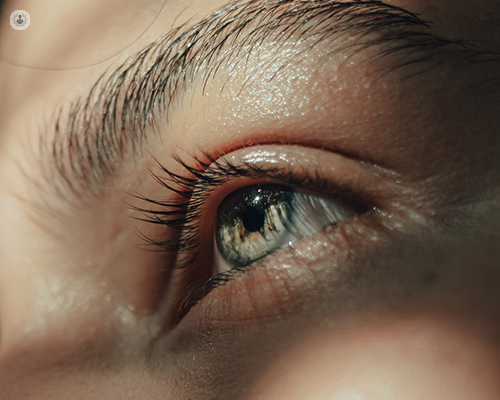Understanding diabetic retinopathy: an informative guide for patients
Written by:In this guide, I endeavour to illuminate a prevalent issue faced by many individuals grappling with diabetes: diabetic retinopathy. This piece will furnish you with crucial insights into diabetic retinopathy, encompassing its origins, manifestations, and precautionary measures. Leading consultant ophthalmologist Mrs Samantha Mann provides a guide to the condition, explaining everything you need to know.

What is diabetic retinopathy?
Diabetic retinopathy constitutes a complication of diabetes impacting ocular health. It transpires when elevated blood sugar levels inflict harm upon the blood vessels in the retina, the light-responsive tissue situated at the posterior of the eye. These compromised blood vessels may emit fluid or undergo haemorrhaging, culminating in visual impairments if unaddressed.
Understanding the underlying factors
The principal instigator of diabetic retinopathy remains prolonged exposure to heightened blood sugar levels. This protracted exposure engenders deterioration of the delicate blood vessels in the retina, impeding their optimal functionality. Concurrently, factors such as elevated blood pressure and cholesterol levels can exacerbate this condition.
Identifying warning signs
In its nascent stages, diabetic retinopathy may not manifest overt symptoms. Nevertheless, as the ailment advances, patients may encounter:
- Blurred vision.
- Presence of floaters or dark spots in the visual field.
- Nocturnal vision challenges.
- Abrupt vision loss.
It is imperative to promptly seek medical intervention upon experiencing any of these symptoms, as timely detection and treatment can forestall vision impairment.
Diagnosis and intervention
Diabetic retinopathy warrants diagnosis through a comprehensive ocular examination, potentially involving a dilated eye assessment to scrutinise the retina. Treatment modalities hinge upon the severity of the condition and may encompass:
- Laser therapy: A technique aimed at sealing leaky blood vessels to deter further retinal damage.
- Injection therapy: Introduction of medications into the eye to alleviate swelling and thwart the proliferation of aberrant blood vessels.
- Vitrectomy: Surgical intervention entailing the removal of blood and scar tissue from the eye.
Regular ocular screenings are of paramount significance for individuals grappling with diabetes, facilitating ongoing surveillance of ocular health and early detection of diabetic retinopathy.
Preventive measures
Although diabetic retinopathy may not invariably be forestalled, adopting proactive measures can attenuate susceptibility. These measures include:
- Maintaining optimal blood sugar levels through adherence to dietary, exercise, and medication regimens as prescribed by doctors.
- Cultivating a wholesome lifestyle characterised by balanced nutrition, regular physical activity, and abstention from smoking.
- Adhering to scheduled ocular screenings as recommended by healthcare professionals.
- By proactively managing diabetes and prioritising ocular well-being, individuals can mitigate the risk of diabetic retinopathy and safeguard their vision for the future.
Remember, early detection and treatment are vital in preserving your vision. If you have diabetes, make sure to prioritise regular eye check-ups to catch any potential issues early on. Your eyesight is invaluable, so you should take care of it!
If you would like to book a consultation with Mrs Mann, simply visit her Top Doctors profile today.


